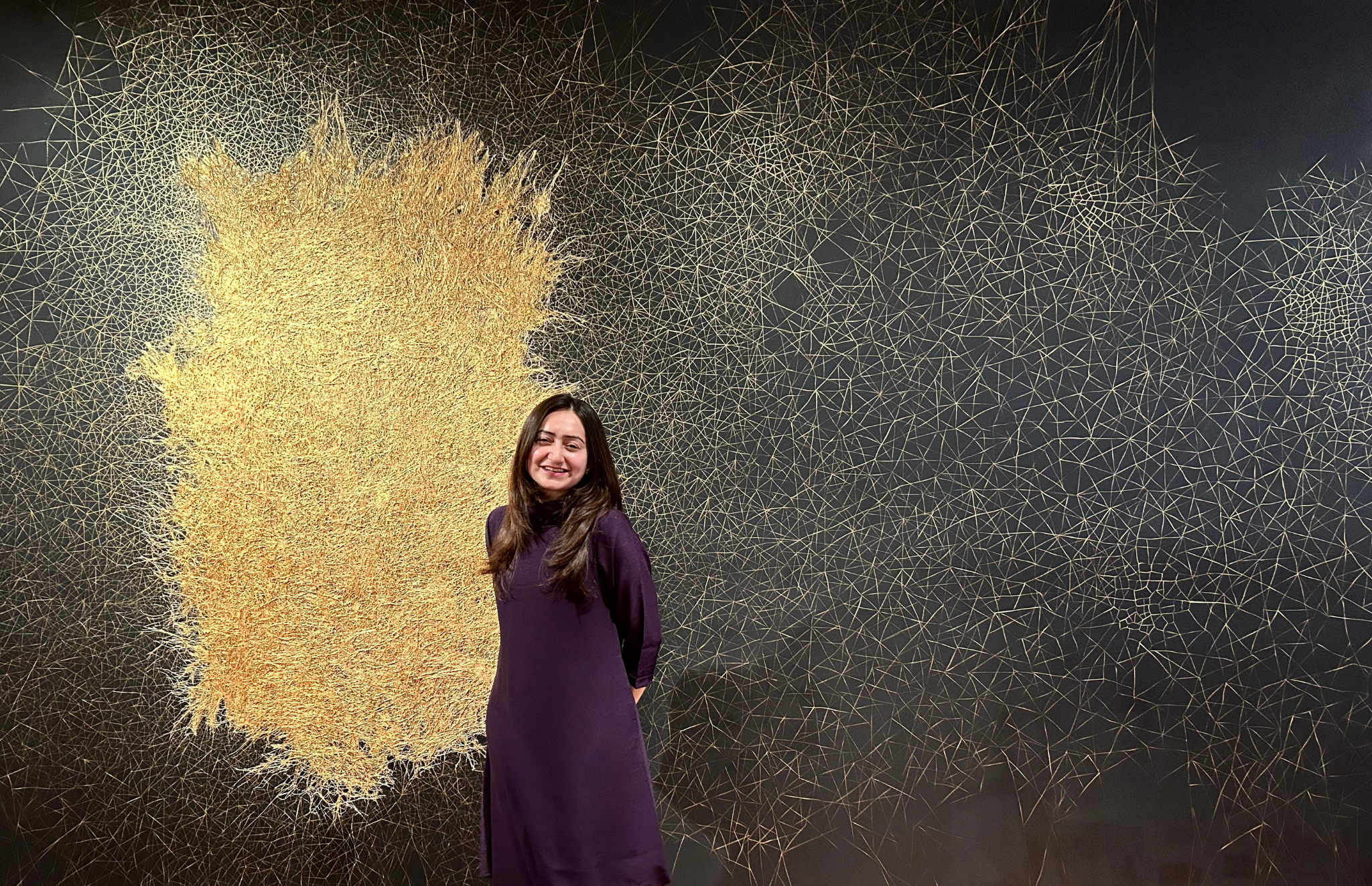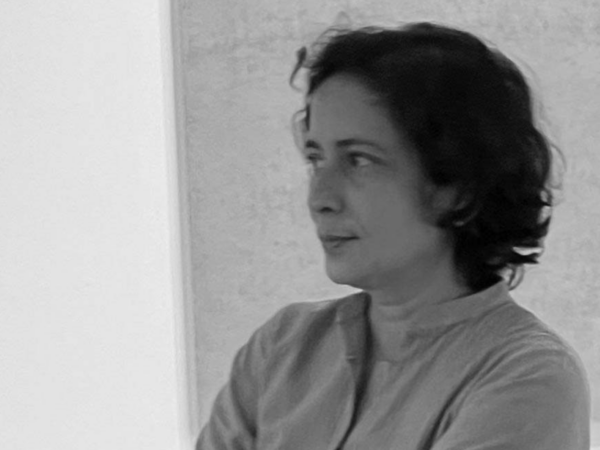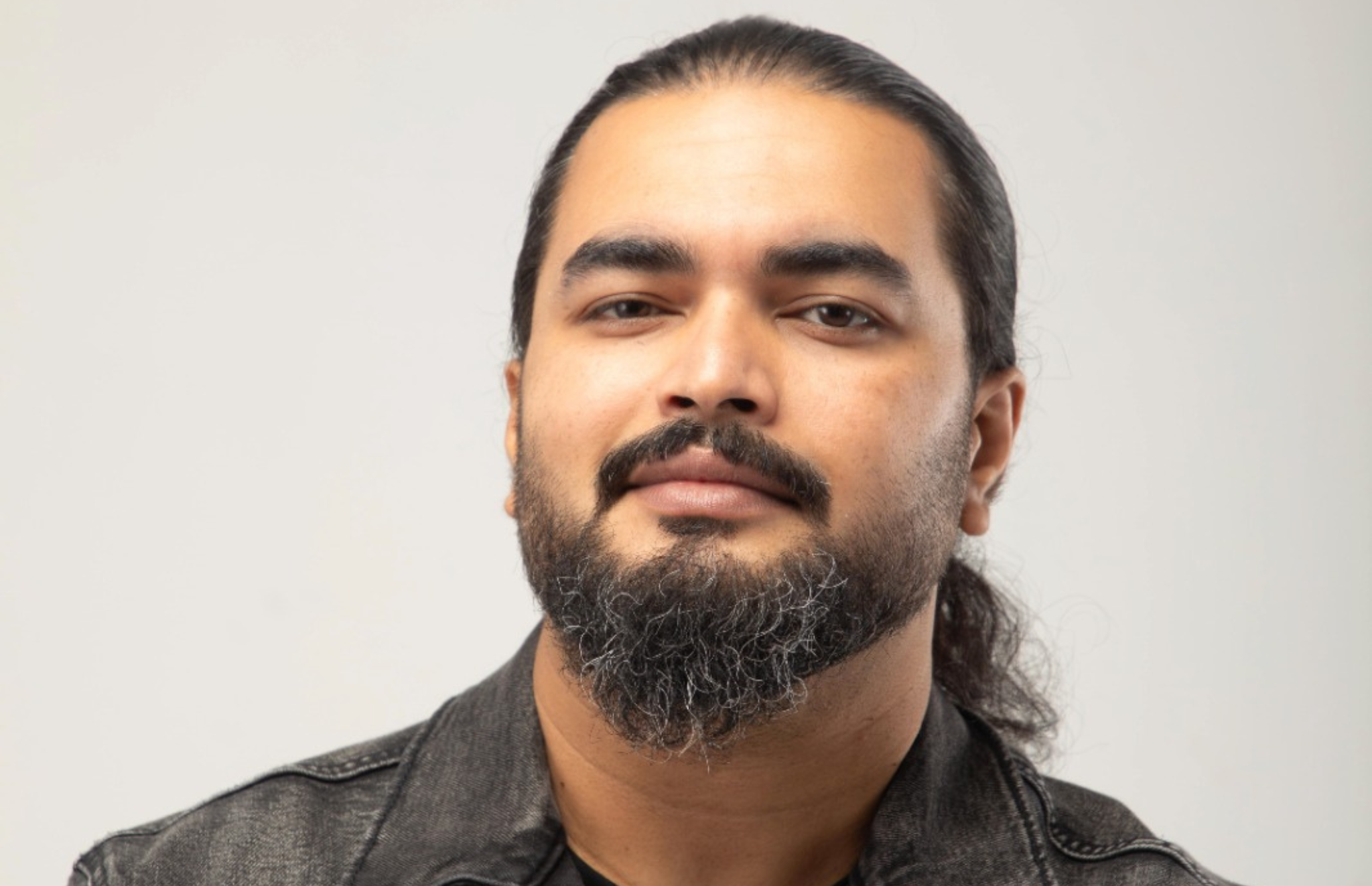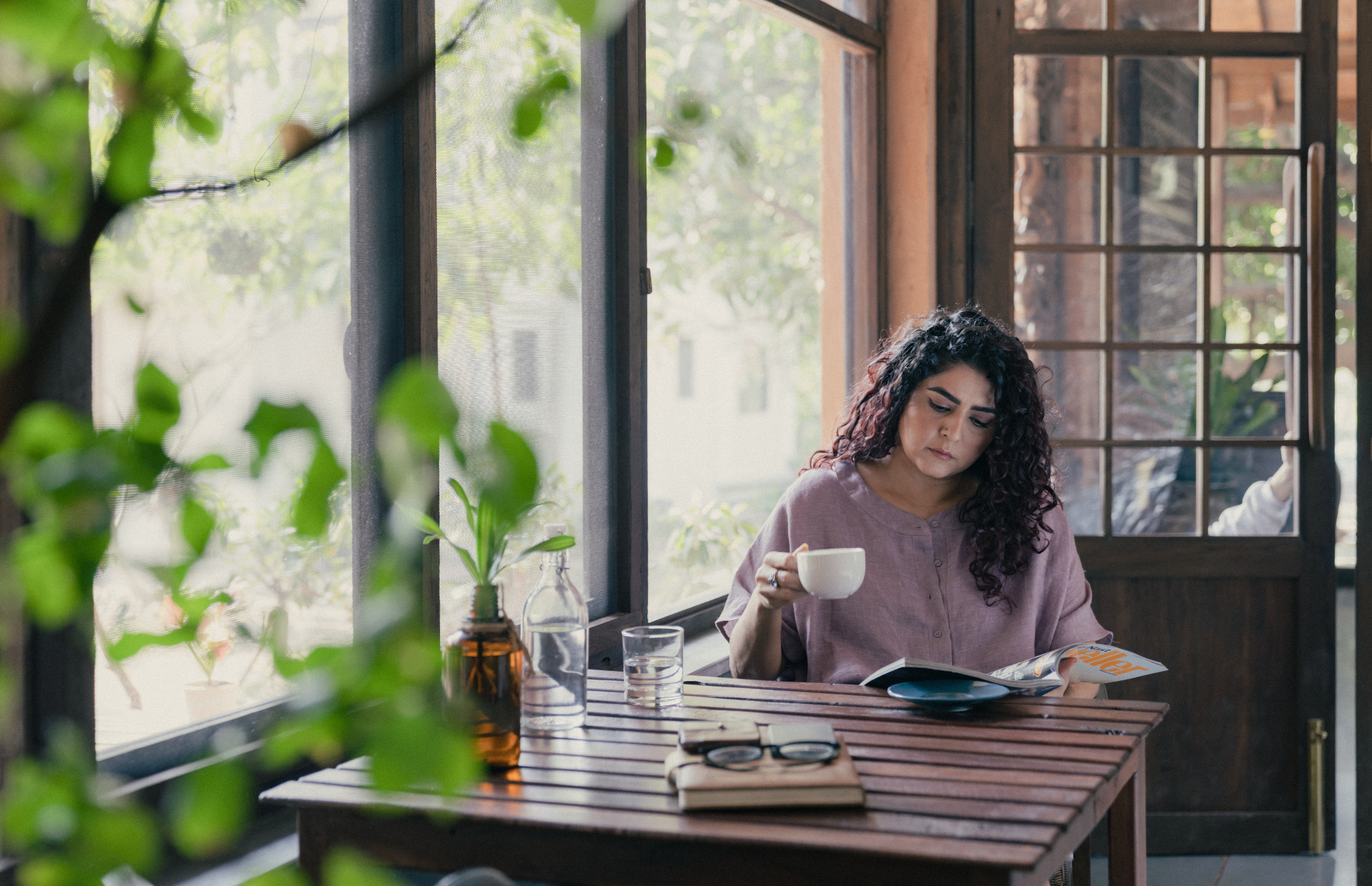Arpita Akhanda, born in 1992, grew up in a family of artists who had migrated from Bangladesh during the partition. The family traversed various locations in India before finally settling in Cuttack, Odisha. Akhanda currently engages in diverse artistic mediums, such as paper weaving, photography, performance, installation, drawing, and video. Her artistic endeavours explore the intersections of multiple histories, focusing on themes like memory, trauma, and migration.

SP: Your work delves into the interplay between personal and institutional memory, particularly in the context of the Partition of 1947. Could you share a specific example of how a personal memory or family archive has shaped one of your art pieces or performances?
AA: Growing up in a family that migrated during the Partition of 1947, colonial history became an intrinsic part of my upbringing. My grandparents, Sri Asim Akhanda, and Smt Sabita Rani Akhanda played pivotal roles in shaping my perspective through their personal experiences and archives.
My grandfather’s photograph album, in particular, became a significant reference point. This album, containing images of his family before and after the Partition, documented the journey of my family as they moved from one house to another during that tumultuous period. It featured the last image he took before leaving his village in Srikail, dated December 1946, along with an excerpt from his diary that meticulously detailed how to find the village in case any family member wished to visit. This diary entry led to a poignant journey in 2018, where my father and I stood in front of the same building captured in that last photograph from 1946. This experience reinforced the value of personal history, memories became evidence. It was a pivotal moment that motivated me to integrate my family’s archive into the broader context of the Partition and its aftermath.
The tangible remnants of colonial and post-colonial memories, including poems, photographs, documents, letters, telegrams, postcards, oral histories, and travelogues have been meticulously preserved by my grandparents and parents. These remnants have significantly shaped my understanding of India’s struggle for independence, the traumatic experience of the Partition, and its impact on the current socio-political landscape of the country. These artifacts, in many ways, represent the lived history of my family, highlighting the gap between what we learn in history books and the realities experienced by those who lived through it.

One of my works that exemplifies the interplay between personal and institutional history is The Living Scar. In this video performance, I tattooed two scars on my body to mark the significance of August 17th, the day when the Radcliffe Line was officially announced. The Living Scar serves as a statement connecting my body to the dissected lands, and these scars as a continuum of the historical scars from my country’s living history. Through this visceral act, I aimed to express not only that my body carries these two historical marks, but also that it resides between them. The accompanying text, a letter written to me before and after getting the two marks, serves as a narrative that speaks to the ongoing impact of this historical event. It emphasizes that the past is not something detached from us, but an integral part of our living experience.
Another example of this interplay is my paper weaving work, The Fall. This piece traces and maps the border by weaving the map of India from 1946 with the maps of India, Pakistan, and East Pakistan from 1947. It symbolically positions a critical moment between the weft and warp of pre- and post-Partition realities.

A recent work that draws inspiration from personal memories shared by my grandparents is আিম উ া নই (I am not a refugee) I & II. This piece delves into the space of language, longing, and anxiety experienced by those haunted by the history of displacement and migration. It involves staged photography and mise-en-scène to revisit undocumented moments from my familial past. In I Am Not a Refugee, the central image and story revolve around my grandparents. I portray the characters of my paternal grandfather and grandmother, dressed in my grandfather’s khadi kurta and my grandmother’s white saree in the traditional āāt poure (eightfold) style. They pose in front of barbed wire, mimicking fenced border landscapes. I use this photographic image as the primary warp and weave it with the maps of the river sections of Meghna and Padma that they had crossed during the Partition of India. The title of I Am Not a Refugee is woven in Bengali text in the top center border of this large paper tapestry. The central image is framed by a weaving of river maps of Odisha, marking the region where they finally settled after years of traveling in search of a place to call home. This frame or border also resembles chatai or reed mats traditionally used for the floor, referencing my grandmother’s interest in stitching and signing her textile pieces with place and date. I wove in Srikail and Borisal in Bengali and Cuttack in Oriya at the base of the work, marking the cities where they were born and passed away.


আিম উ া নই (I am not a refugee) I & II, paper weaving with archival print on Innova smooth cotton. Image courtesy: Jan Van Eyck Academie. আিম উ া নই (I am not a refugee) II in collections of Museum Kunstsammlung Nordrhein-Westfalen K21, Dusseldorf, Germany.
SP: How do you perceive the role of the body in preserving and transmitting colonial and postcolonial recollections over generations? Are there specific aspects of the body or physicality that you find particularly potent in this regard?
AA: I look at the body as a memory collector, carrying within it not only the physical imprints of history but also the emotional and psychological residues of colonial and postcolonial experiences. It serves as a living archive, preserving and transmitting these recollections across generations.
My perception of the body goes beyond its physicality; it extends to encompass the voice, actions, and even the silence it communicates. Often, oral histories passed down through generations are intertwined with gestures and bodily expressions. My grandparents provided two distinct examples in this regard. In my grandfather’s case, he curated an archive of physical objects that embodied the memories of migration during the Partition. But one of the memories that he passed on through his body memory to the next two generations is explored in my performance titled খদ(Khēda).


In this performance, I delved into the memory of the very act my grandfather performed on the eve of 15th August 1947 at the Banaras Ganga Ghat. On that significant day, he sacrificed all his belongings, especially the khadi clothes that he wore during years of fighting for freedom. These clothes bore the imprints of his sacrifice for the great cause. He immersed them in the river Ganga on the day of our Independence. What he did was a ritual called tarpan a Hindu practice of making a libation to the dead. In this context, it became a symbolic act of protest. Everything that he had stood for and fought for had been negated by the birth of a divided nation. He sacrificed his belongings with a sense of deep regret, which he later expressed in a poem titled খদ(Khēda).
This memory was passed on to me by my father, and my performance on 15th August 2015 was based on this powerful memory. I performed his poem using the inks that he typically used to write, on khadi cloths. By the end of the performance, I gave away the clothes bearing the imprints of the performance to a nearby water body, echoing the ritual my grandfather had performed nearly seven decades earlier. This act served as a poignant reenactment and a tribute to his sacrifice and his protest against the partition of our nation based on religious lines.
In contrast, my grandmother’s memories were primarily oral and shared through storytelling. I recall a poignant moment when she narrated her experiences while gently rotating a hand fan, creating a comforting rhythm as she spoke. As the night deepened, her stories transformed into memories of the Noakhali riots and her escape from the violence in her village. Her hand, still holding the fan, rested as she fell asleep. This intimate connection between the action of rotating the hand fan and her recollections of home, belonging, and childhood left an indelible impression on me. Inspired by this memory, I developed an installation piece during my residency at Jan Van Eyck called Hath Pakha, an ongoing documentation of memories related to home through the experiences of the women in my family who came to India during or after the Partition. This sensory, interactive work invites viewers to fan themselves, and as they do, they listen to the memories. When the fanning stops, so do the memories, creating a poignant interactive experience.

My current exploration delves into the concept of the body as a communicator of memories through action, such as whispering. I am intrigued by how the body employs such subtle actions to convey and share memories. The intimacy of this communication is a subject of ongoing exploration in my work.
SP: How do you view the pixelated, broken, hidden, dissected, and blurred visual language you create as a metaphor for forgotten and lost narratives? What stories or narratives do you believe have been overlooked or marginalized in the context of colonial and postcolonial histories?
AA: The pixelated, broken, hidden, dissected, and blurred visual language that I incorporate into my work is, to me, a metaphor for the forgotten and lost narratives within the context of colonial and postcolonial histories. These visual elements serve as deliberate and impactful choices aimed at capturing the intricacies and often obscured nature of these overlooked stories.
Pixelation, within my artistic practice, represents the fragmented and scattered nature of historical narratives. Many facets of colonial and postcolonial histories, particularly the personal and familial dimensions, are like scattered pixels, making it challenging to piece together the complete and interconnected story within the larger historical context. The broken and dissected elements in my visual language symbolize how historical narratives have been torn apart, fragmented, and sometimes intentionally dissected, mirroring the deliberate concealment or misrepresentation of certain aspects of these histories. The hidden and blurred components reflect how specific narratives have been intentionally obscured or withheld over time.
Personal experiences, often overshadowed by dominant narratives, are a central focus of my work. They struggle to find recognition or representation within the larger historical discourse. I view my artistic practice as a platform that seeks to bring personal and institutional memory onto the same plane, allowing for a deeper understanding of the methods of history and memory-making. It is crucial to delve into the complexities of identity and the diverse ways in which individuals and communities navigated the colonial and postcolonial eras. These nuanced identities and experiences deserve exploration and acknowledgment.

An example of this concept can be seen in my work The Dissected Souvenir I. In this piece, I created a parallel family album alongside my grandfathers. I wove family photographs with telegrams and letters (collected from digital archives) issued by the then government, containing information about how the Partition would unfold. The interplay between the warp of the personal photographs from family archives and the weft of the official text from government documents conceptually and physically brings these two forms of memory-making into the same space. This juxtaposition questions the possibilities and reality of personal history existing behind the institutional veneer of official information. It underscores the need to uncover and recognize the hidden stories that have been obscured by dominant narratives.
SP: As an artist engaged in the critical examination of sociopolitical identity, how do you hope your work influences viewers’ perceptions and understanding of identity as it relates to history and memory?
AA: I aspire for my work to be a catalyst for viewers, igniting their perceptions and understanding of these intricate subjects and engaging in critical thinking regarding the multifaceted nature of identity, particularly within the context of historical and memory-related narratives. I hope to encourage them to reimagine and reevaluate established historical and memory narratives, and to invite them to delve into stories that have been forgotten or marginalized.
Many of my viewers have connected with me to share their archives, entrusting me to safeguard their personal histories from being lost. Additionally, I’ve seen people coming forward to share their memories during my performance Transitory Body. Viewers have actively contributed and shared their memories throughout the performance, whispering in my ears and engaging in an exchange of personal experiences. This reciprocal exchange of memories highlights the interconnectedness of individuals and the migration of these memories, reinforcing the role of the body as a vessel for personal and collective recollections.


Another performance piece called 360 Minutes of Requiem invited viewers to physiologically undo the borders that divide us, based on the socio-political fabric that has conditioned us to perform and think of the ‘other’. In this performance, I explored the notions of nationalism, borders, and partitions by trying to deconstruct 360 feet of barbed wire fence over a 360-minute-long immersive performance staged over two days, allowing viewers to witness the hard work and labour involved in undoing historical and psychological barriers that have divided us for centuries.
I firmly believe that identity is not monolithic, and history is far from being a linear progression. Through my work, I emphasize the richness and complexity of sociopolitical identity and historical narratives. By fostering dialogue, we can collectively deepen our understanding of the nuances of identity within the realms of history and memory. Moreover, my work also aims to challenge the conventional notion of memory as something solely residing in the mind but to consider how it is embedded in the body.
SP: In your exploration of personal histories alongside institutional narratives, what challenges have you encountered in giving voice and recognition to these personal stories? How do you envision your art bridging this gap?
AA: One significant challenge is the tendency to marginalize personal narratives in favor of more dominant institutional histories. These personal stories are often concealed or overshadowed within the larger historical discourse. Bringing these stories to the forefront is indeed a challenge, especially as family archives can be fragmented and incomplete, making it difficult to construct a comprehensive and coherent narrative. To bridge this gap and piece together the fragments, I’ve employed visual elements like pixelation as a metaphor to symbolize the fragmented nature of these archives and narratives. This visual metaphor draws attention to the gaps in our understanding and underscores the importance of reconstructing these partially obscured stories. For example, one of the works titled In Memory of (I & II) is a set of two paper-weaving works developed in memory of the portraits I grew up looking at, in my family’s photo albums. These unknown persons were part of the family before the partition and now no one recognizes them. Memories fade, stories are forgotten, but the people remain frozen in these photographic remnants. This series is part of a larger ongoing work, and it responds to a collection of unknown, unremembered characters getting lost within the annals of history and the political decisions that give shape to destiny. Methodologically, I dissect images and the map based on their last traced location, then weave them back together, the resultant “new” image is ambiguous. The shredded paper falling at the sides evokes a psychological passage of time.
Another substantial challenge lies in conveying the transmission of trauma across generations. Accessing or extracting these memories from family members is an immensely sensitive undertaking. Memories are inherently subjective and can vary based on an individual’s mood, interests, and the level of trauma they experienced. Therefore, it’s crucial to approach these interactions, interviews, or conversations with great care and sensitivity. Revisiting these memories at their source is a pivotal part of the process of gathering as much information as possible. With this research, I then work to construct the narrative. Throughout this process, my body embodies these memories and reflects on my practice, aiming to convey the palpable nature of trauma to viewers.
Personal stories within a family can often diverge, and there may be conflicting perspectives on historical events, often shaped by their intergenerational nature. I fully acknowledge these differences and invite viewers to engage with the intricacies of memory and history. My objective is not to provide a single, definitive narrative, but rather to ignite conversations and reflections on these differences, fostering a richer understanding. In some cases, institutional narratives have actively suppressed or silenced personal stories, particularly when challenging the official account.
The urgency of collecting these memories is further intensified by the fact that many of the individuals who experienced these traumas first-hand have either passed away or are in vulnerable stages of life. Extracting or guiding them back to these memories can be an emotionally challenging endeavor. Yet, as they are the primary source of my research, it is indeed important to document their invaluable contributions.
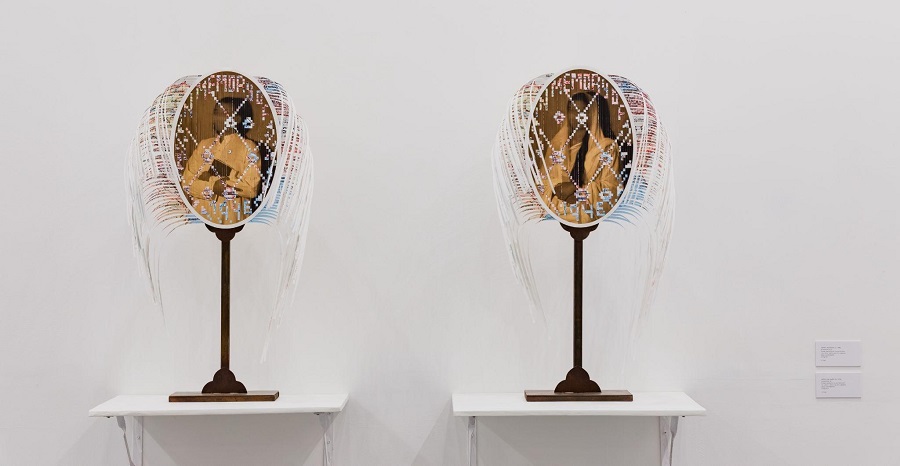
Image courtesy: Arpita Akhanda, Emami Art, Linda Inconi, K2, Jan Van Eyck Academie Find out more about the artist and her artworks:

